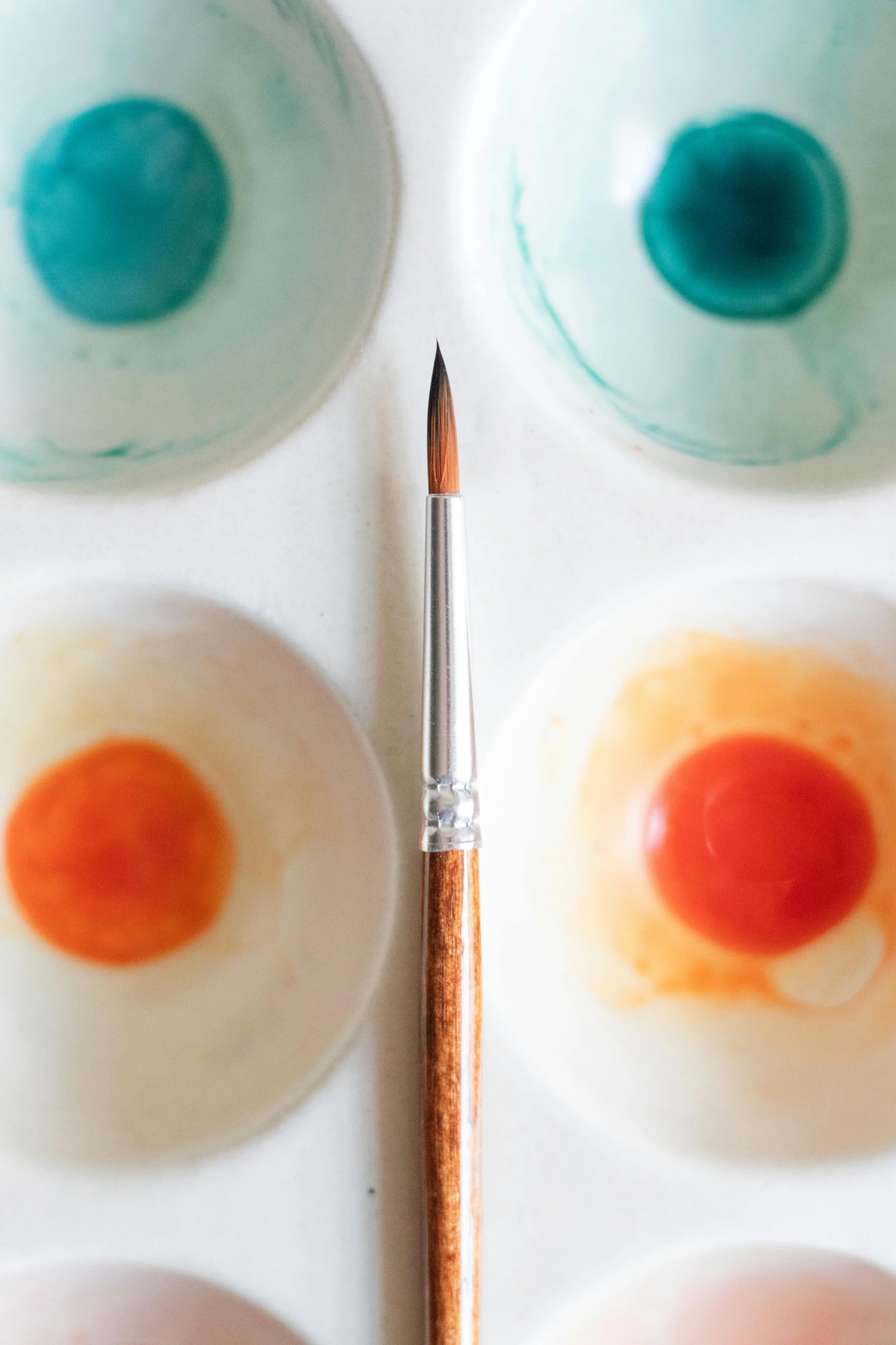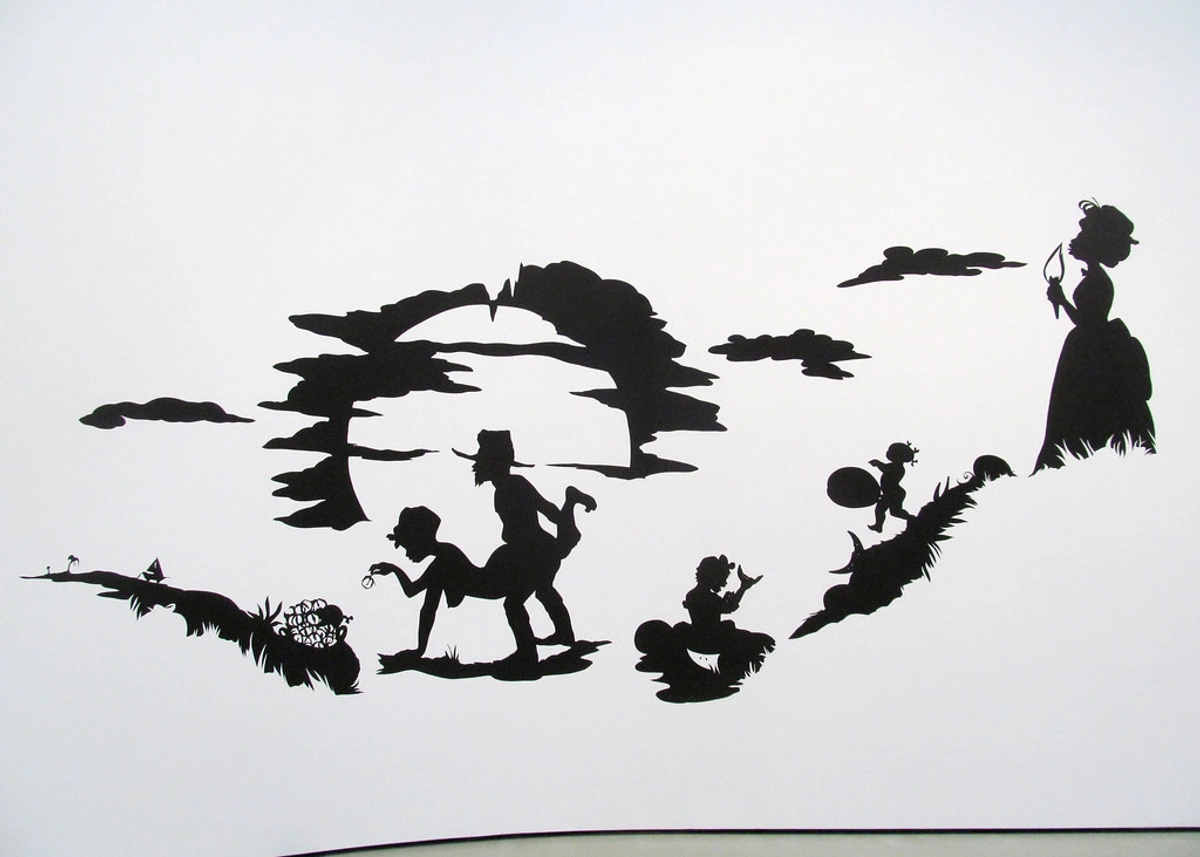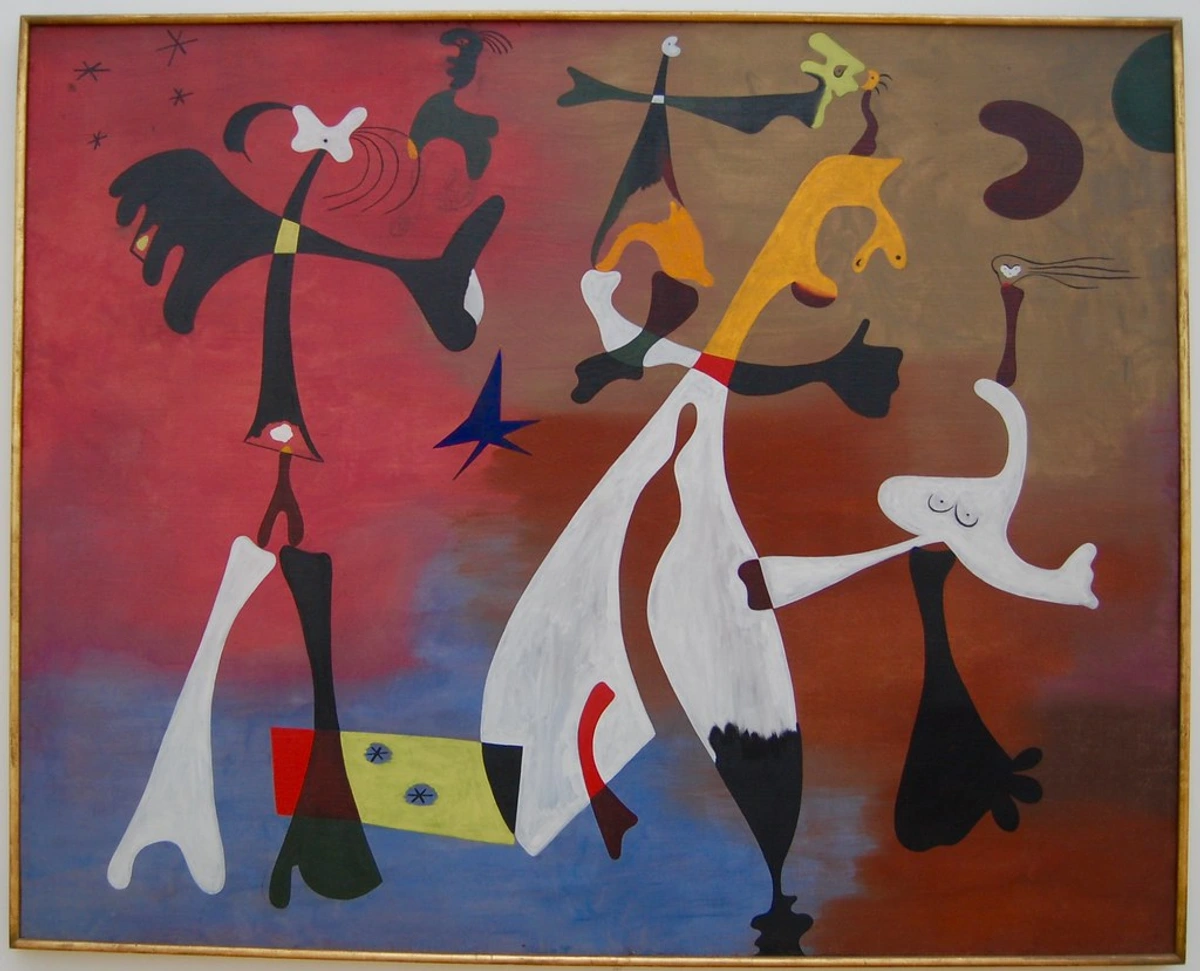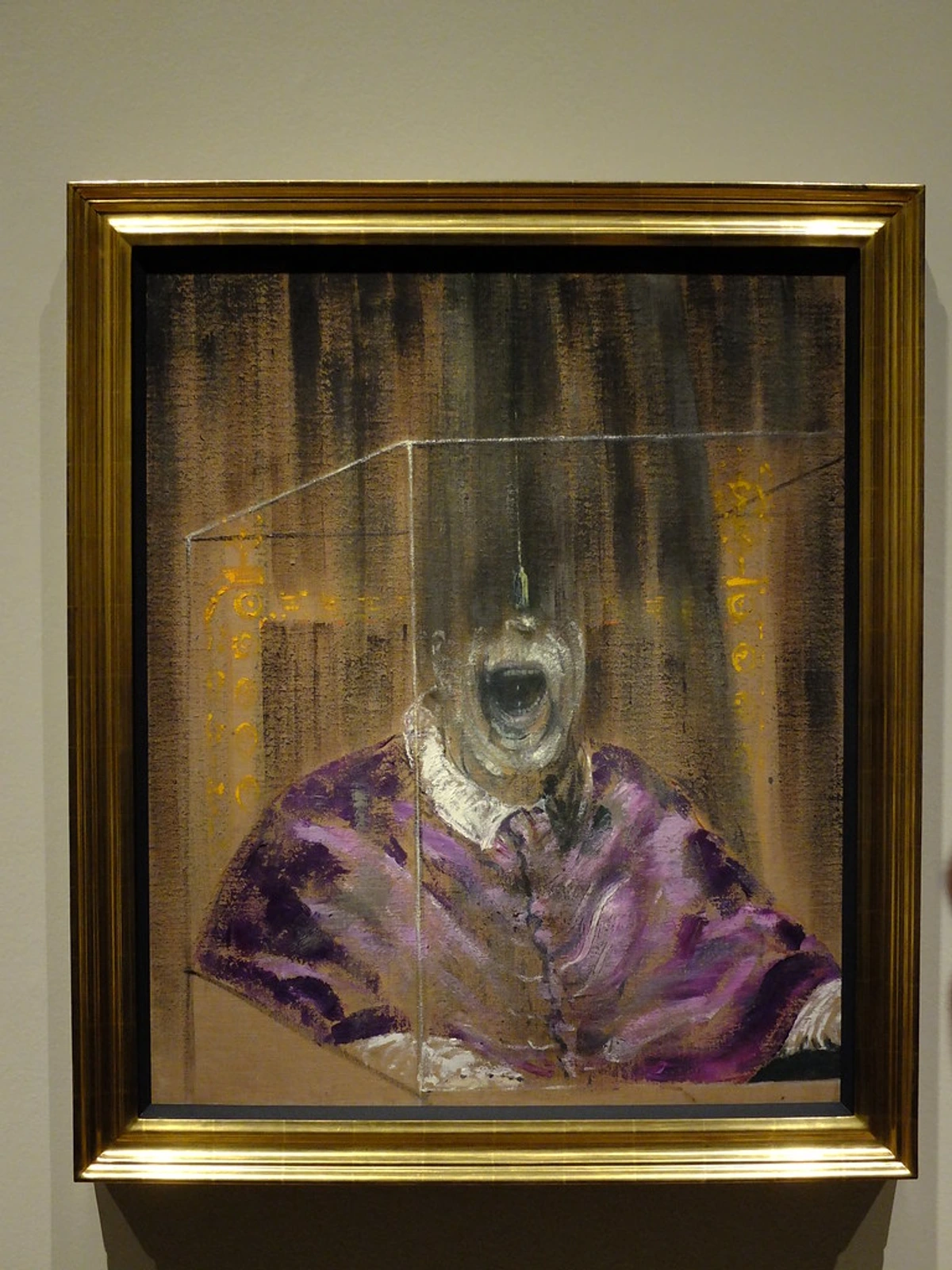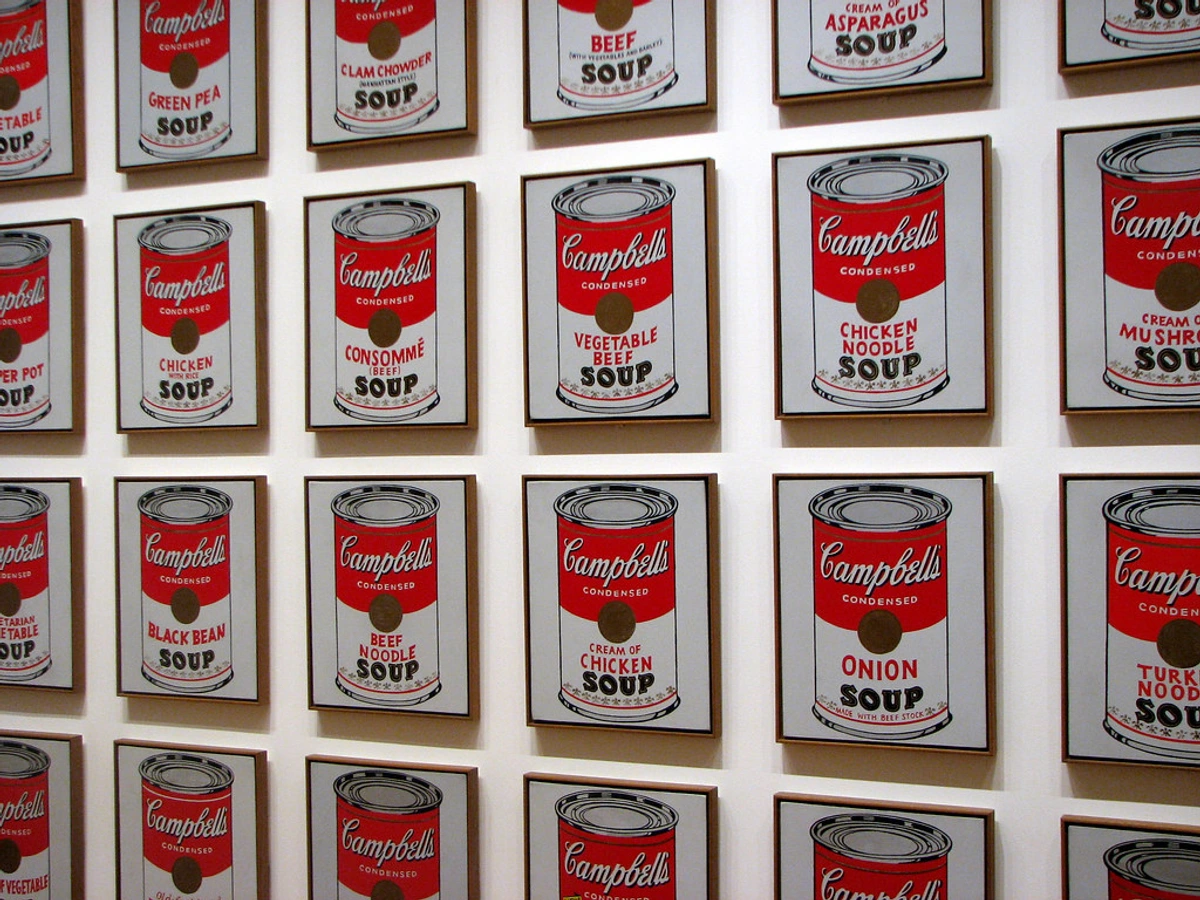
The Soulful Gallery Wall: Blending Abstract Art, Photography & Intentional Chaos
Master the art of a soulful gallery wall. Discover expert tips for curating abstract art, photography, and mixed media with intentional chaos to craft a deeply personal home decor that tells your unique story.
The Soulful Gallery Wall: Blending Abstract Art, Photography & Intentional Chaos
I know that feeling. You're standing in front of a vast, blank wall, and instead of inspiration, a tiny, almost mischievous flutter of dread takes hold. It's that familiar mix of bubbling excitement for the potential, yet a slight, self-deprecating fear of the sheer decision-making process ahead. It's like staring into a fridge full of amazing, disparate ingredients – a gourmet puzzle – but having no clue what masterpiece to cook. In our case, it's about arranging disparate art pieces into a visual symphony. This, my friends, is precisely how I often feel about gallery walls, especially when you start throwing abstract art, photography, and even mixed media into the mix, aiming for that perfect dash of chaos. I remember staring at my own living room wall, armed with a chaotic collection of postcards from my travels and a bold abstract piece I'd impulse-bought, feeling that same familiar flutter of dread. It's not just about hanging things; it's about creating a living conversation between pieces, a visual narrative that resonates with your soul, perhaps even murmuring a secret or two.
But let me tell you, that initial flutter of 'Oh god, where do I even begin?' is usually followed by a profound joy once it all clicks into place. There's something truly magical about curating a space that tells a story, your story, through a collection of diverse visuals. And yes, sometimes that conversation involves a little beautiful chaos – the kind that makes you lean in closer, tilt your head, and smile. This guide will walk you through my personal journey and practical tips for achieving just that, transforming your wall into a dynamic, deeply personal reflection of you. We'll dive into defining what makes a gallery wall soulful, exploring the power of intentional chaos with abstract art and photography, uncovering where to find unique pieces, planning your layout like a pro, and finally, bringing your vision to life. So, take a deep breath, embrace the glorious mess, and let's get started!
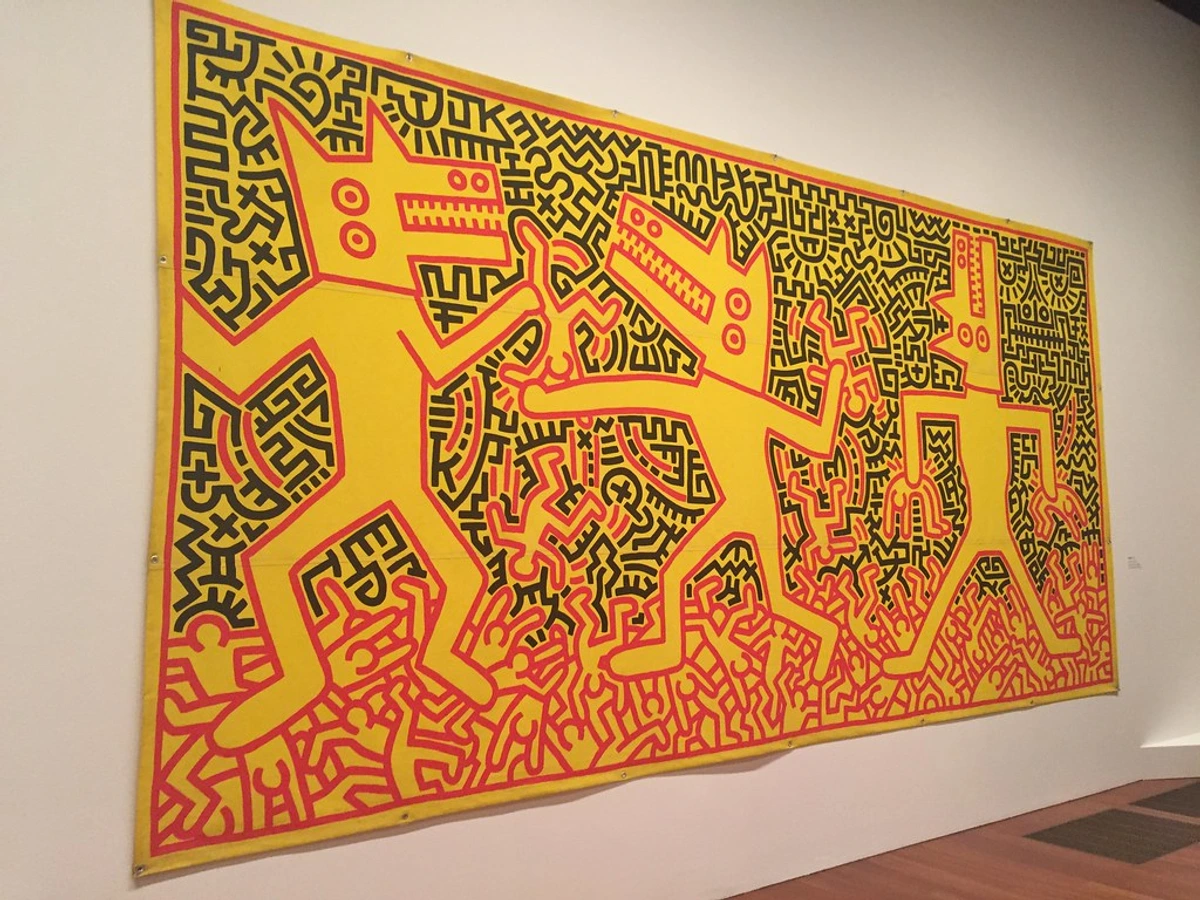
Beyond Frames: Defining Your Soulful Gallery Wall
Before we dive headfirst into the beautiful madness of intentional chaos, let's talk about what makes a gallery wall truly soulful. For me, it's not merely a collection of frames on a wall, mechanically filling a void. It's a carefully curated tapestry of moments, emotions, and aesthetics that collectively tell your story in a profound way. Think of it as a visual narrative, where each piece—whether it's a faded photograph of your grandmother's hands holding a teacup, placed next to an abstract painting with warm, earthy tones that evoke the feeling of her kitchen, or a found object from a memorable journey—contributes a unique voice to the overall chorus. The emotional impact is paramount; it should evoke joy, intrigue, and a powerful sense of belonging every time you glance at it. It's a space where every piece has earned its place through resonance, not just by occupying square footage. You see, the concept of a gallery wall isn't entirely new; its roots can be traced back to the grand salons of 17th and 18th-century Europe, where art was displayed in dense, floor-to-ceiling arrangements. But our modern interpretation allows for so much more personal expression and intentional disorder.
Imagine the quiet hum of a perfectly balanced room. A soulful gallery wall contributes to that, influencing your mood and well-being in subtle yet powerful ways. It transforms a blank space into a dialogue, a comforting presence, and a constant source of inspiration. It's about reflecting your unique values and lived experiences. What themes, colors, or textures evoke a sense of peace, excitement, or nostalgia for you? Your gallery wall is a space for self-expression, so let it reflect your unique story.
The Psychological Impact: More Than Just Decoration
Beyond aesthetics, a thoughtfully curated gallery wall can profoundly influence your mood and overall well-being. It can serve as a visual anchor, grounding you in your personal history and aspirations. Studies have shown that surrounding ourselves with art can reduce stress, stimulate creativity, and even improve cognitive function. When you fill your walls with pieces that evoke positive emotions, memories, or simply a sense of wonder, you're not just decorating; you're actively shaping your environment to support your mental and emotional landscape. It's a daily dose of visual therapy, if you will. Think of the mind-bending narratives evoked by surrealist masterpieces like Salvador Dalí's 'The Persistence of Memory'; a well-curated gallery wall, much like Dalí's work, can stir deep emotional and intellectual responses, inviting you into a world of personal meaning.

Intentional Chaos: Creating a Captivatingly Dynamic Gallery Wall
When I talk about a 'dash of chaos,' I'm not advocating for a messy, thoughtless arrangement that looks like a tornado just kissed your wall. Far from it. This chaos is intentional, a deliberate disruption of perfect symmetry and predictable patterns. It's the visual equivalent of a perfectly composed piece of music that suddenly introduces an unexpected, slightly dissonant chord that, instead of jarring, somehow makes the whole thing richer, more intriguing, and utterly unforgettable. Think of how a jazz musician might intentionally play a 'wrong' note that, in context, creates a thrilling tension, pulling you deeper into the melody. Visually, this means creating visual tension—a dynamic imbalance that pulls the eye in, encouraging closer inspection, making you linger a little longer, wondering about the story behind the art. I learned early on that what might look like a 'mistake' can often be the most interesting part of the composition, a real moment of magic.
It's about knowing the rules of balance and then, with a sly wink, gently bending them to achieve a more engaging and authentic display. For instance, while a haphazard wall might feel overwhelming, intentional chaos uses varied sizes, textures, and styles to create movement and depth, inviting exploration rather than causing confusion. You're designing a conversation, not a shouting match. This might mean placing a perfectly framed minimalist photograph slightly askew next to a free-form textile piece, or using a cluster of small, vibrant abstract works to break up a large, serene landscape photograph. It could also involve varying the orientation of frames – a portrait next to a landscape image, or a deliberate grouping of all square frames to break up a predominantly rectangular collection.
Soulful vs. Merely Chaotic: Finding the Heart of the Mess
The distinction is crucial. Merely chaotic is random, overwhelming, and lacks cohesion. Soulful chaos, on the other hand, is curated. It's a deliberate choice to embrace variety and asymmetry, but always with an underlying sense of connection or narrative. Each piece, even if it seems to clash, contributes to a larger story or feeling. It's like a well-loved quilt made of diverse fabric scraps; individually, they're just pieces, but together, they form a comforting, meaningful whole. The 'soulful' aspect comes from the authenticity of your choices and the emotional resonance each piece holds for you. If your eye can't find a place to rest, or if colors clash rather than converse, it's a sign that the chaos is not yet intentional.
Historical Echoes of Intentional Disruption
While we might call it 'intentional chaos' today, artists throughout history have played with visual disruption to create impact. Think of the Cubists, like Picasso and Braque, who shattered traditional perspectives into fragmented forms, forcing viewers to reassemble reality in their minds. Their masterpiece, Pablo Picasso's "Guernica", with its fragmented figures and stark monochromatic palette, is a powerful example of using visual discord to convey intense emotion and social commentary.
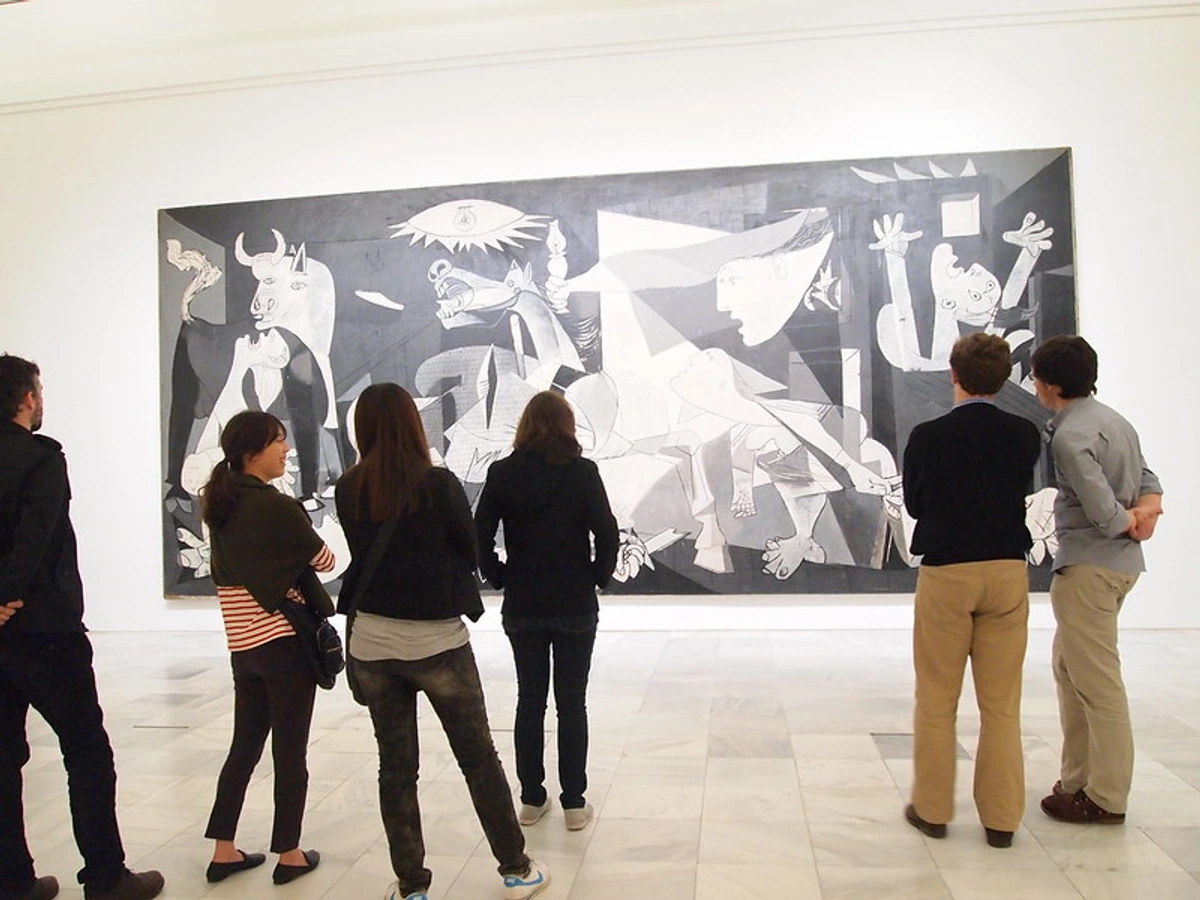
Or the Surrealists, led by Dalí and Magritte, who juxtaposed dreamlike imagery in unexpected ways, creating a sense of delightful unease and challenging rational thought. These movements, in their own ways, are precursors to the dynamic, visually arresting compositions we aim for in a soulful gallery wall. They taught us that breaking from strict order can unlock new levels of engagement and meaning. Beyond Western art, consider the layered symbolism in ancient Egyptian tomb paintings or the dynamic arrangements in Japanese ukiyo-e woodblock prints, both creating rich, complex narratives through carefully considered visual disruption. Even ethnographic displays often curated objects not by strict chronology but by thematic resonance, creating an engaging (if sometimes problematic) form of visual storytelling.
Another fascinating example is Constructivist theatre set design, like the work of Alexandra Exter. Here, geometric shapes and bold lines were deliberately arranged in dynamic, asymmetrical ways to create visual tension and represent the dynamism of modernity, fundamentally disrupting traditional stage aesthetics. This approach to calculated visual imbalance offers rich inspiration for our gallery walls.
![]()
Why Abstract Art and Photography are Perfect for Intentional Chaos
Abstract art, with its non-representational forms and evocative colors, and photography, capturing slices of reality through unique perspectives, are uniquely suited for creating intentional chaos. They invite personal interpretation and often lack a single, fixed focal point, making them incredibly versatile. The real magic happens when you embrace the unexpected placement. You see, an abstract piece might offer a burst of energy or a calming counterpoint, while a black-and-white photograph could provide a moment of quiet introspection or a stark graphic element. When placed together, they don't necessarily match in the traditional sense, but they converse, creating a layered experience. For abstract art, its inherent ambiguity allows for broader interpretive connections, fostering unexpected dialogues between pieces. For photography, its diverse styles – from high-contrast monochrome to soft-focus macro shots, or candid street photography – can create intentional visual friction and compelling narratives.
An abstract painting, perhaps a bold Neo-Expressionist work by an artist like Georg Baselitz (if you want to dive deeper, check out my thoughts on Georg Baselitz) or a subtle Dadaist collage, can introduce an element of pure color or form, challenging the viewer's perceptions, while a realistic photograph grounds the arrangement in a tangible reality. This push and pull is the essence of intentional chaos – making you lean in, not back.

Want to explore more about abstract movements? If you're drawn to the raw emotion of abstract expressionism, you might find my deep dive into the ultimate guide to abstract art movements particularly illuminating.
Gathering Your Ingredients: Types of Art for Your Dynamic Wall
When building a gallery wall with intentional chaos, the beauty truly lies in diversity. Don't limit yourself! Think of your wall as a stage, and each piece as a character with a unique personality, ready to contribute to your visual play. The more varied your cast, the richer the story. My own collection grew from a single impulse buy to a curated reflection of my life's journeys, piece by piece.
Abstract Art: The Unpredictable Heartbeat
Abstract art, from gestural explosions to minimalist geometry, offers pure form, color, and emotion. It's the perfect element for intentional chaos because it encourages subjective interpretation, allowing individual pieces to resonate differently with each viewer. Movements like Impressionism paved the way for Cubism and later, Abstract Expressionism (think of pioneers like Wassily Kandinsky, Jackson Pollock, or Mark Rothko), which aimed to convey emotion or ideas beyond literal representation. Whether it's a vibrant, colorful piece that energizes the space, a geometric abstraction for structural contrast, or a more subdued, textured abstract that adds depth, abstract works can be the unexpected chords in your visual symphony. Look for pieces that evoke a strong personal feeling, even if you can't quite articulate why. That 'why' is its soul. Perhaps a lyrical abstraction by Helen Frankenthaler for its flowing color, or a stark geometric piece by Ellsworth Kelly for its precise forms.
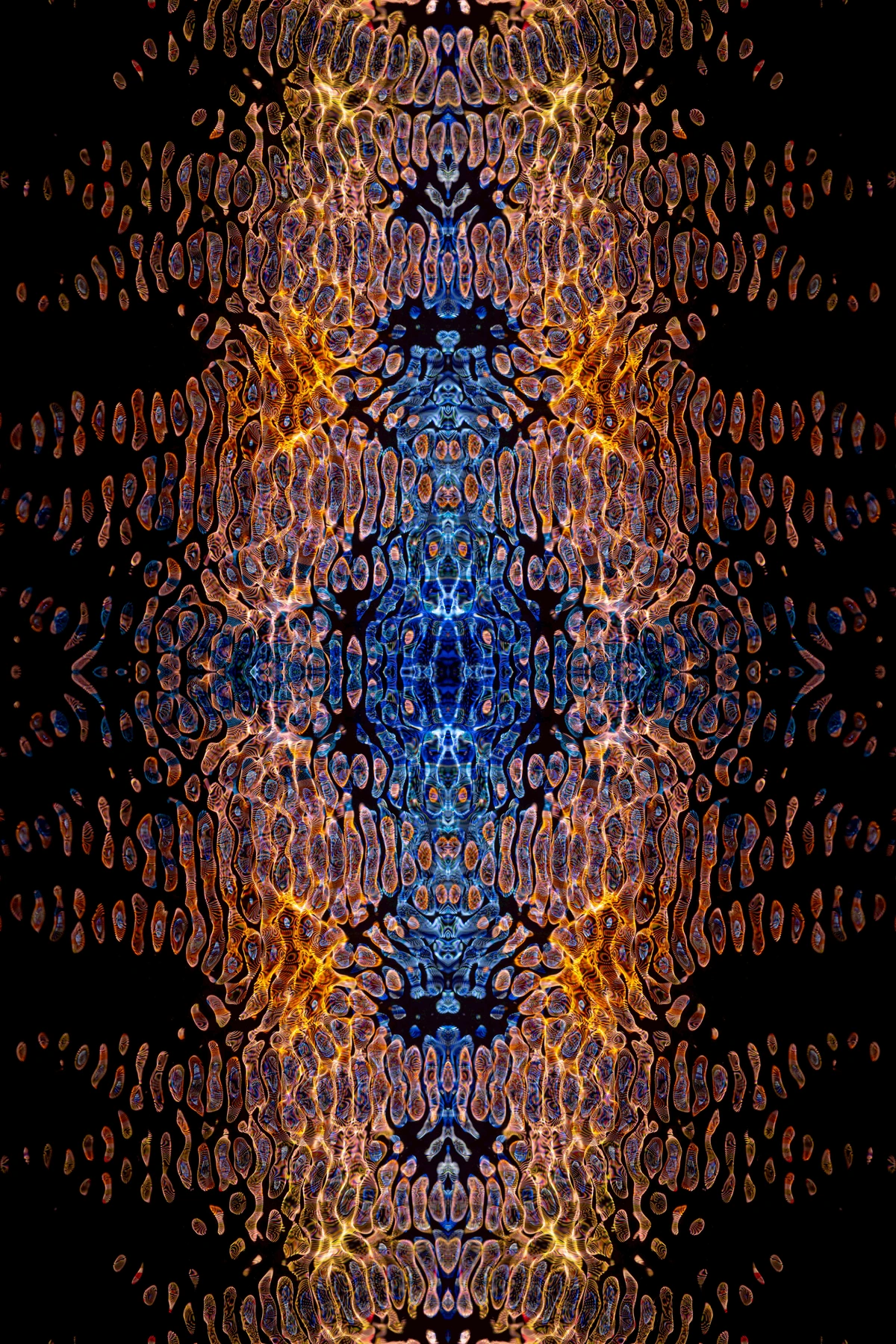
Photography: Glimpses of Reality and Dreams
Photography anchors your gallery wall in reality or transports it to another. From serene landscapes and intimate portraits to gritty street scenes or conceptual fine art, photographs offer a window into moments and emotions. A striking black-and-white photo, perhaps reminiscent of Ansel Adams' landscapes or Diane Arbus's portraits, can provide a powerful contrast to a riot of color, while a series of travel snapshots can weave a deeply personal thread through the entire arrangement. They offer a moment of recognition, a pause for reflection amidst the abstract dance. Diverse photographic styles (e.g., high-contrast monochrome, soft-focus macro shots, candid street photography, or even surreal photography) can create intentional visual friction and compelling narratives. Consider the raw emotion of a Weegee street photograph, the ethereal quality of a fine art landscape by Edward Weston, or the historical narrative of a vintage sepia-toned print. They can be found in my /buy section, too!
Illustrations & Drawings: Whimsy, Detail, and Line
Don't underestimate the power of a simple line drawing, a delicate watercolor illustration, or a bold graphic print. These pieces can inject whimsy, intricate detail, or a powerful graphic quality that complements more painterly or photographic works. They often carry a directness and intimacy that adds a unique layer to your wall's narrative. Consider a vibrant children's book illustration for a touch of playful nostalgia, a finely detailed botanical drawing to introduce a sense of delicate precision, or even architectural sketches that provide a structured counterpoint to organic forms. The simple power of line work can be surprisingly impactful.
Mixed Media: Texture, Depth, and the Unexpected
For those who truly embrace chaos with intention, mixed media art is a treasure trove. Pieces that combine paint, collage, fabric, or even found objects add incredible texture and three-dimensionality. Techniques like assemblage (creating art from found objects), encaustic (using heated wax), or digital collage (combining digital images) inherently break traditional boundaries, making them stellar candidates for creating dynamic tension and inviting closer inspection. They're often conversation starters in themselves. A deconstructed collage with torn paper and layered paint, or an encaustic piece with embedded fabric, immediately adds a tactile, intriguing element. If you're curious about my own approach, I share my thoughts on my journey with mixed media.
Textiles & Embroidery: Softness and Warmth
To soften the edges and introduce a different kind of tactile experience, consider incorporating small textile pieces, embroidered art, or woven wall hangings. These add warmth, texture, and a domestic touch that can beautifully balance more rigid or formal art forms, making your gallery wall feel even more inviting and lived-in. If you're interested in fiber art, you might enjoy a Q&A with a textile artist. Think of a brightly colored macrame piece next to a stark black and white photograph; the contrast is delightful.
Sculptural Elements & 3D Objects: Breaking the Plane
Why stick to two dimensions? Small, wall-mounted sculptures, intriguing found objects, or even beautifully framed personal mementos can literally add another dimension to your gallery wall. Imagine an old compass, a piece of driftwood, a beautifully crafted wooden mask, or intricate metalwork hanging among your flat pieces. They create shadows, play with light, and pull the viewer into the physical space of the wall, making the whole arrangement feel more immersive and dynamic. For more ideas, explore how to incorporate sculptural art into modern interiors. Even a replica of a classical statue, like Michelangelo's David, can serve as a powerful three-dimensional anchor, creating a striking contrast with more contemporary flat pieces.
Typography & Quotes: Words as Art
Sometimes, the most direct way to convey a message is with words. Art featuring typography, meaningful quotes, or even abstract calligraphy can add a verbal narrative layer to your visual story. This could range from bold, graphic sans-serif fonts that make a strong statement to delicate, elegant calligraphy adding a touch of sophistication. It can be a personal motto, a philosophical snippet, or just a beautiful arrangement of letters that resonate with you, acting as a direct anchor in your visual narrative. Consider a distressed font for a raw, edgy feel, or crisp, minimalist lettering for a contemporary touch. The visual rhythm of words can be just as compelling as brushstrokes.

Vintage Prints & Memorabilia: A Touch of History
Old maps (especially ornate 19th-century cartography), vintage posters (perhaps classic Art Nouveau advertisements or early film prints), antique botanical prints (like intricate Victorian illustrations of flora and fauna), or even personal relics like old concert tickets or postcards from a memorable journey, when tastefully framed, can add immense character and a sense of history. They tell stories of places, times, and personal journeys, adding a nostalgic charm that grounds the more contemporary elements. Their historical significance and often unique aesthetic (think aged paper, faded inks) add another layer of intrigue and intentional disruption to your wall. I love how these pieces can feel both familiar and wonderfully out of place, sparking conversation. Perhaps a classic still life painting, with its historical composition, could be juxtaposed with a modern abstract piece to create an intriguing dialogue across centuries.
Personal Mementos & Ephemera: Your Life's Art
This is where the 'soulful' truly comes into play. Don't shy away from incorporating pieces that might not be considered 'fine art' but hold deep personal meaning. A child's vibrant drawing, a pressed flower from a significant event, a delicate handwritten letter, a beautifully designed piece of personal stationery, or even a cherished ticket stub from a concert that changed your life—these are invaluable. To elevate them, consider custom framing that highlights their importance without overshadowing their raw, personal charm. For example, a simple floating frame, a shadow box (the role of shadow boxes in displaying art is transformative!), or even a custom-cut mat that allows for a tiny handwritten note, can transform a seemingly mundane item into a treasured artwork, creating an intimate dialogue between your personal history and the curated aesthetics of your wall. These are the secret whispers of your story. Consider grouping a few related mementos into a small cluster to create a mini-narrative within the larger wall.
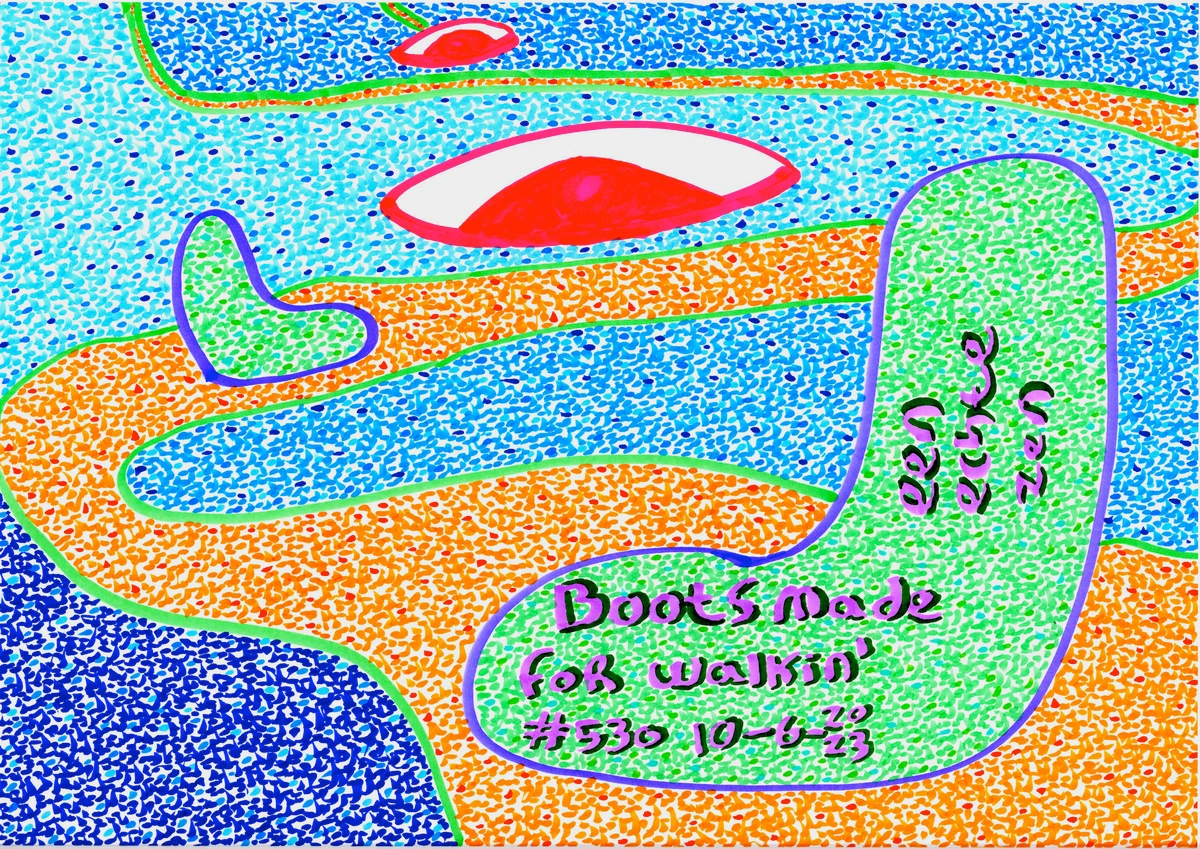
credit, licence
Framing vs. Unframed: A Dynamic Duo
Don't be afraid to mix and match! While a cohesive collection of framed pieces can look polished, intentionally incorporating unframed canvases, prints mounted on rigid boards, or even raw textile hangings can add a powerful layer of texture and visual interest. An unframed abstract painting can bring an immediate, raw energy, contrasting beautifully with the refined border of a framed photograph. This juxtaposition is a fantastic way to introduce subtle chaos and depth, making the entire wall feel more dynamic and less static.
Diverse Art for Your Dynamic Wall
To summarize the vast possibilities for your soulful gallery wall, here's a quick overview of how different types of art can contribute to that beautiful chaos:
Art Type | Contribution to Intentional Chaos | Example Application |
|---|---|---|
| Abstract Art | Pure form & color, subjective interpretation, energy | A bold gestural abstract next to a minimalist landscape photo. |
| Photography | Glimpses of reality, emotional anchors, perspective | A gritty street scene contrasted with a serene portrait. |
| Illustrations/Drawings | Whimsy, intricate detail, strong graphic lines | A delicate botanical drawing alongside a vibrant pop art print. |
| Mixed Media | Texture, 3D elements, unexpected material combinations | An assemblage piece with found objects creating tactile tension. |
| Textiles/Embroidery | Softness, warmth, tactile experience | A woven wall hanging balancing rigid framed prints. |
| Sculptural Elements | Depth, shadows, breaks the 2D plane | A small wooden mask amidst flat artworks. |
| Typography/Quotes | Verbal narrative, graphic statements, stylistic font play | A bold motivational quote breaking up a series of abstract forms. |
| Vintage Prints/Memorabilia | History, nostalgia, unique aesthetic | An antique map creating a focal point among travel photos. |
| Personal Mementos | Deep personal meaning, unique story, authenticity | A child's drawing framed elegantly beside a contemporary piece. |
Curating Your Collection: Where to Find the Perfect Pieces
Building a truly soulful gallery wall is a process that takes time and patience. It's rarely an overnight project, and that's perfectly okay! The hunt for the perfect pieces is part of the joy. Here's where I often look to gather my 'ingredients':
- Local Galleries & Art Fairs: Great for discovering emerging artists and unique, original pieces. Chat with gallerists; they often have incredible insights. You might even find a new favorite artist, or learn something new about a movement (like if you explore a Q&A with a gallerist on discovering new talent). Don't be afraid to ask about an artist's pricing structure or if they offer payment plans.
- Artist Studios & Websites: Many artists, myself included (you can find my art for sale here), sell directly from their studios or online, offering a more personal connection to the artwork. This is often where you find the most unique pieces and can build a direct relationship.
- Online Art Marketplaces: Sites like Etsy, Saatchi Art, or even larger platforms can offer a vast selection of prints, originals, and photography from a global community of artists. Be mindful of print quality and read reviews, especially for limited editions.
- Flea Markets & Antique Shops: Treasures await! Vintage prints, old maps, unique frames, or intriguing objects can be repurposed and add immense character. Look for signed pieces, unique paper types, or hand-colored illustrations. Always check the condition carefully, and don't be afraid to haggle a little. I once found a beautifully aged, hand-drawn anatomical chart that became a surprising anchor in one of my more chaotic walls.
- Photography Exhibitions & Print Sales: Support photographers directly and find stunning limited-edition prints. These often come with certificates of authenticity, which can be valuable.
- Your Own Creations: Don't underestimate the power of your own drawings, paintings, or even well-designed craft projects. They add an undeniable personal touch and are the truest reflection of you.
- Personal Mementos: Framed postcards, letters, pressed flowers, concert tickets – anything that holds sentimental value can be elevated to art. Remember, collecting emerging abstract art is a journey in itself, and your gallery wall can be a testament to your own evolving taste.
Budgeting for Your Soulful Collection
Art doesn't have to break the bank. You can create a stunning gallery wall on any budget. Here's a quick look at where to focus your resources:
Budget Level | Art Acquisition Strategy | Framing Strategy | Key Takeaway |
|---|---|---|---|
| Entry-Level | Digital prints (download & print yourself), postcards, personal photos, flea market finds, student art, creative reuse. | Affordable off-the-shelf frames (IKEA, thrift stores), DIY matting from craft paper, washi tape borders, Command Strips. | Focus on sentiment and creative presentation. Your 'soul' is the most valuable ingredient. Explore digital art for budget-friendly options. |
| Mid-Range | Limited edition prints, emerging artists from online marketplaces, small originals from local fairs, quality photography, unsigned open editions. | Custom matting with ready-made frames, or a few custom frames for key pieces. Mix & match frame styles. Invest in impactful pieces where it matters. | Invest in a few impactful pieces, but balance with more affordable, personal elements. Look for art that genuinely resonates with you, rather than focusing purely on speculative value. |
| High-End | Original paintings, established artists, vintage collector's prints, art gallery purchases. | Professional custom framing for all pieces, archival materials, museum glass. | Prioritize preservation and showcasing the intrinsic value of high-quality art. Consider how to choose art for high ceilings for large pieces. Ensure archival quality for long-term enjoyment. |
Remember, the goal is to find pieces that resonate with you. Don't rush; let your collection grow organically. The joy is in the journey, not just the destination.
The Blueprint for Brilliance: Planning Your Soulful Gallery Wall
Before you grab the hammer and nails (or command strips, no judgment here!), a little planning goes a long way. This is where you translate your collection of individual 'ingredients' into a cohesive, soul-stirring masterpiece. Think of it as choreographing your chaos – a beautiful paradox, isn't it?
Defining Your Vision & Theme: Your Wall's Core Story
Even with intentional chaos, a subtle underlying vision or theme acts as your compass. Is it a wall celebrating travel? A meditation on nature? A vibrant exploration of color? This doesn't mean everything has to match, but rather that there's a thread connecting the pieces. This initial thought can guide your choices, helping you decide which pieces truly earn their place. My own wall, for example, started as a celebration of vivid color and evolved into a narrative about personal journey and discovery. Ask yourself: what story do I want this wall to tell, and what emotions do I want it to evoke? What colors make your heart sing? What textures speak to your comfort?
The Color Palette: Unifier or Dynamic Disruptor
Color is a powerful tool in any visual composition. A deliberate color palette can unify disparate pieces, creating a harmonious flow, or, conversely, strategic use of contrasting colors can enhance intentional chaos, adding vibrant energy and visual intrigue. Consider a dominant color or a shared mood (e.g., tranquil, energetic, introspective). Understanding how artists use color can really elevate your approach here.
Measuring Your Canvas (The Wall): Scale and Space
Start by measuring your wall. Consider the furniture beneath it, the height of the ceiling, and any architectural features. A common guideline is to aim for the center of your gallery wall to be around eye-level (roughly 145-155 cm or 57-60 inches from the floor), but this can be adjusted if you have very high ceilings or specific furniture arrangements (for high ceilings, there are special considerations). Don't be afraid to let your gallery wall extend beyond a single piece of furniture, creating a more expansive feel. Also, think about how natural light hits the wall throughout the day and what artificial light sources you might use in the evening. The function of the room (e.g., a busy living room vs. a quiet study) can also influence your layout choices, much like choosing art for your living room requires a holistic approach.
Mocking Up Your Masterpiece: From Floor to Wall
This is my absolute favorite, and most forgiving, step. Before punching any holes, create a mock-up. It's surprisingly liberating! Here's how I approach it:
Method | Description | Pros | Cons |
|---|---|---|---|
| On the Floor | Arrange all your pieces on the floor in front of the wall. Play with different configurations, spacing, and groupings. | Gives a bird's-eye view; allows for endless, commitment-free adjustments; great for arranging pictures on a wall. | Doesn't fully replicate vertical wall perspective; can be tiring bending over repeatedly. |
| Paper Templates | Trace each framed piece onto butcher paper or newspaper, cut them out, label them, and tape to the wall using painter's tape. | Best for visualizing actual layout on the wall; easy to adjust; zero wall damage (initially); great for experimenting with negative space. | Can be time-consuming to create templates, especially for many pieces; sometimes the paper curls. |
| Digital Tools | Use apps or online tools to upload photos of your art and wall to digitally arrange them. | Great for tech-savvy users; quick and precise adjustments; visualizes exact proportions; easy to share options. | Can feel less tactile and intuitive for some; requires good photos of art and wall; learning curve for new software. |
I find a combination often works best – floor for initial composition, then paper templates for the final on-wall visualization. Step back, live with it for a day, and make adjustments. Don't be afraid to try wildly different arrangements; that's the beauty of no commitment! It's like playing a giant game of Tetris on your living room floor – surprisingly therapeutic!

Framing Your Narrative: The Art of the Edge
Frames are not mere borders; they are integral to your wall's personality and how each piece is perceived. For an intentionally chaotic yet soulful wall, mixing frames is key. Embrace different materials (wood, metal, ornate, minimal), colors, and widths. Try pairing an ornate, gilded frame with a sleek black metal one for a striking contrast, or consider using a consistent matting color (like a warm white or a deep charcoal) across all frames to create a sense of unity even with diverse frame styles. A simple white mat can unify disparate pieces, while a bold, colored mat can make a piece pop. The frame should enhance the art, not overpower it, but don't be afraid for some frames to have their own voice too! This is your chance to really show your flair and personality. For more expert insights, you might enjoy a Q&A with an expert art framer.
Matting Strategies for Intentional Chaos
Matting plays a subtle yet powerful role in the overall presentation. For intentional chaos, you can bend the rules here too:
- Consistent White Matting: This is your best friend for unifying a disparate collection. A crisp, neutral white mat provides a visual breathing room around each piece, making even wildly different artworks feel like they belong together. It's the silent anchor.
- Varying Mat Widths: Instead of uniform mats, try varying the width. A wider mat around a small, delicate drawing can give it more gravitas, while a thinner mat on a large, bold print can allow the artwork to dominate. This creates subtle visual tension.
- Colored Matting (Used Sparingly): A single pop of colored matting (perhaps echoing a color in the artwork) can draw the eye and act as a deliberate disruptor, a playful accent. Use it strategically to highlight a key piece or to introduce an unexpected element.
- No Matting: For raw canvases, prints on rigid boards, or very modern photography, sometimes no matting at all creates a stark, contemporary edge that contrasts beautifully with more traditionally matted pieces, adding to your intentional chaos. It feels immediate and unmediated, a refreshing break from formality.
Breaking the Frame: Avant-Garde Touches
For those truly committed to intentional disruption, consider frames that are themselves 'imperfect' or unusual. This could involve:
- Distressed or Reclaimed Wood: Frames made from old barn wood, driftwood, or salvaged materials add texture, history, and a raw, organic feel.
- Intentionally Mismatched Sizes/Materials: Beyond just mixing styles, actively seeking out frames that seem 'wrong' for the art, then making them right through clever placement, can be a bold statement. It's about finding harmony in unexpected contrasts.
- Open-Ended Frames: Sometimes, a piece doesn't need a full enclosure. A two-sided frame for a textile, or a piece partially 'breaking out' of its frame, can add a surreal, dynamic quality.
Consider these framing principles:
Frame Type | Best For | Impact on Intentional Chaos |
|---|---|---|
| Minimalist | Modern art, photography, sleek spaces | Creates breathing room, highlights art itself; acts as a quiet counterpoint or grounding element. |
| Ornate/Vintage | Classic art, typography, adding gravitas | Adds historical texture, creates focal points; provides dramatic contrast to modern or minimalist pieces. |
| Colored/Bold | Drawing attention, unifying a color scheme | Deliberate focal points, adds playful disruption; injects bursts of energy or a pop of surprise. |
| Gallery Style | Unifying diverse art, creating cohesion | Structured randomness, keeps visual flow; offers a base rhythm while allowing for individual expression. |
| No Frame | Canvases, prints on boards, raw aesthetic | Raw, contemporary edge, adds textural contrast; feels immediate, unmediated, and subtly disruptive. |
Bringing Your Vision to Life: Hanging with Intentionality
Once you've planned, mocked up, and framed, it's time for the gratifying act of installation. This is where your intentional chaos truly takes physical form. It's exhilarating, I promise!
Arrangement Strategies: Finding Your Flow
While a strict grid offers perfect symmetry, intentional chaos thrives on more organic or salon-style arrangements. Here's a quick look at approaches:
Layout Style | Description | Best for Intentional Chaos? |
|---|---|---|
| Grid | Pieces are evenly spaced in a strict, uniform pattern. | No (too rigid; lacks dynamic tension and freedom for true chaos). |
| Linear | Pieces aligned horizontally or vertically along a single imaginary line. | Can work for a subtle thread or as a grounding element, but limit its dominance (e.g., a single linear row within a larger organic cluster). |
| Salon Style | Clustered, varied sizes and shapes, often with tight spacing. High visual density. | Yes (classic chaos; naturally encourages interaction and creates a 'full' and engaging look). |
| Organic | Grows outward from a central piece, less structured than salon, allowing for natural expansion. | Yes (flexible chaos; feels natural and allows for evolution and subtle shifts; highly adaptable). |
| Asymmetrical | Uses varying sizes and placements to create balance without mirroring. Key to visual tension. | Absolutely (core of intentional chaos; creates compelling visual weight and unexpected harmony). |
For intentional chaos, I lean heavily into organic and asymmetrical layouts. They allow for natural expansion and encourage a dynamic visual journey across the wall, without looking completely arbitrary. Remember, understanding balance in art composition doesn't always mean perfect symmetry; often, asymmetrical balance is far more engaging. When you have a dominant, weighty piece, balance it with a cluster of smaller, lighter ones on the opposite side to prevent it from feeling isolated or overpowering. It's like a seesaw—you can balance a heavy person with a group of lighter ones. Think of a bold, large abstract piece balanced by three smaller, delicate photographs on the other side; the combined visual weight creates harmony.
The Role of Negative Space in Intentional Chaos
It might sound counterintuitive, but negative space—the empty wall around and between your artworks—is crucial for intentional chaos. It's not about filling every inch; it's about strategic breathing room. Just as silence in music makes the notes more impactful, empty space on your wall allows the eye to rest and enhances the impact of the surrounding pieces. It prevents your wall from feeling overwhelmingly busy or cluttered. Think of it as carefully placed pauses in your visual narrative, allowing each piece to truly sing without shouting over its neighbors. Without it, your 'chaos' can quickly devolve into visual 'noise.' When your gallery wall feels too 'matchy' or visually heavy, often the solution is to introduce more negative space.
Hanging Hacks & Hardware: Tools for Success
Good tools make all the difference. You'll need:
- Measuring Tape: Essential for spacing.
- Pencil: For marking.
- Level: Crucial for straight lines (even in chaos, some lines should be straight, I promise!).
- Picture Hangers: D-rings, wire, sawtooth hangers, or specialized picture hanging systems.
- Command Strips: A fantastic, non-damaging alternative for lighter pieces (up to 7.2kg or 16 lbs, depending on the strip) or renters. Always check weight limits!
- Hammer/Drill: Depending on your hangers and wall material.
When hanging, always double-check your measurements, use your level, and don't be afraid to adjust. That's the beauty of the mock-up system – you know roughly where everything goes, but the final millimeter adjustment on the wall is part of the process. For heavier items like framed canvases or dense mixed media pieces, use robust wall anchors or stud finders. For lighter items such as textile art or unframed prints, small nails or even strong adhesive hooks can suffice. For those in rented spaces, how to create a cohesive art collection in a rented apartment offers more specific solutions.
Item Type | Recommended Hanging Method | Max Weight (Approx.) | Notes |
|---|---|---|---|
| Light Prints/Photos | Small nails, Command Strips (Picture Hanging Strips), adhesive hooks | 2-7 kg (4-16 lbs) | Great for renters; remove cleanly. Always check product's weight limit. Ensure surface is clean and dry for optimal adhesion. |
| Medium Framed Art | D-rings with picture wire and robust picture hooks; sawtooth hangers (for lighter frames) | 5-20 kg (10-45 lbs) | Ensure hook is rated for weight; use two hooks for wider pieces to prevent tilting. Mark carefully for level hanging. |
| Heavy Framed Art/Canvases | Heavy-duty picture hooks (e.g., plasterboard hooks, concrete hooks), D-rings with heavy-gauge wire, wall anchors (for drywall), specialized hanging systems. | 10-45 kg (20-100 lbs) | Locate wall studs for maximum security; consult a professional for very heavy items. Use appropriate anchors for drywall or plaster to prevent damage and ensure safety. |
| Textile Art/Wall Hangings | Dowel rods, curtain rods with decorative finials, specialized textile hangers, small nails directly into fabric (if appropriate), clear fishing line. | Varies | Consider material fragility; ensure even weight distribution. For delicate pieces, avoid direct nailing and opt for fabric clips or a hidden rod. |
| Fragile/Small 3D Objects | Shadow boxes (for tiny items), clear acrylic shelves, discreet wall-mounted display boxes, fishing line with small hooks. | Varies | Prioritize protection from dust and falls. Ensure secure mounting from the back or bottom. The role of shadow boxes in displaying art is transformative for these. |
Scale, Proportion, and Eye-Level Engagement
Consider the scale of your pieces relative to each other and to the wall itself. Think of it like composing a band; you have your lead singer (a large statement piece), your rhythm section (medium-sized pieces), and your percussion (smaller accents). Each plays a vital role in the overall harmony. A large statement piece can be balanced by a cluster of smaller ones. Don't crowd everything together; allow for negative space, which is just as important as the art itself. It gives the eye a place to rest and enhances the impact of the surrounding pieces. Aim for the collection's visual center to be at eye level, approximately 57-60 inches (145-155 cm) from the floor, for comfortable viewing. This is essentially the art of curating a gallery wall with abstract art: tips for a dynamic display.
The Final Flourish: Lighting, Living & Evolving Your Wall
Your gallery wall isn't just a static display; it's a living, breathing part of your home. It deserves the right spotlight and a chance to evolve.
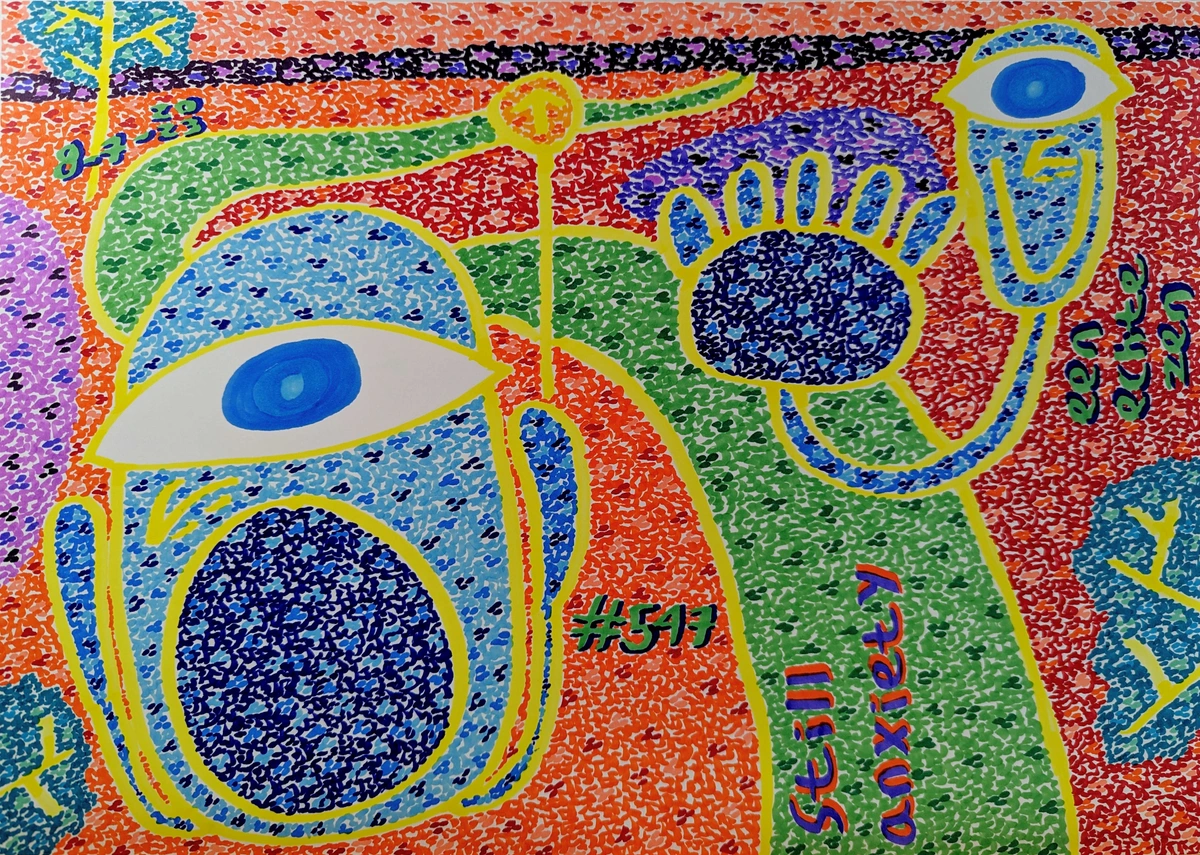
credit, licence
Illuminating Your Story: The Magic of Light
Good lighting can transform your gallery wall, highlighting textures, intensifying colors, and creating a dramatic effect. Consider these options:
- Natural Light: The best, when available, but be mindful of direct sunlight that can fade art over time. For more delicate pieces like watercolors or photographs, UV-protective glass in frames is a wise investment. Indirect natural light is ideal, as it offers soft, even illumination without the risk of damage. Think of it as a gentle embrace, not a harsh spotlight.
- Picture Lights: Small, dedicated lights mounted above individual pieces. Elegant and focused. Consider using a warmer light temperature (around 2700K-3000K) for a cozy, inviting feel, or a cooler tone (3500K-4000K) for a more modern, gallery-like aesthetic.
- Track Lighting: Versatile, allowing you to position spotlights to illuminate specific artworks or sections.
- Ambient Lighting: General room lighting that contributes to the overall mood and gentle illumination of your wall.
Remember, the art of display is crucial. Experiment with different light sources and intensities to find what best enhances your unique collection and the mood you want to create. For works with rich textures, consider a grazing light from the side to emphasize their dimensionality, a trick I often use in my own studio. This technique creates dramatic shadows and highlights, bringing sculptural elements and textured abstracts to life.
Maintenance & Evolution: A Living Canvas
Like any cherished collection, your gallery wall benefits from a little care. Regular, gentle dusting will keep your pieces looking fresh. For different mediums, specific care might be needed: ensure prints are framed with archival materials, handle delicate textiles carefully, and keep photographs away from direct, harsh sunlight to prevent fading. A good rule of thumb? If you wouldn't leave a treasured book in direct sunlight, don't leave your art there either.
Over time, you might find new art, or your tastes might evolve. That's the beauty of an intentionally chaotic, soulful wall – it's designed to be dynamic. Perhaps you start with a wall focused on landscapes, but as you discover your love for abstract expressionism, you begin to integrate bolder, more gestural pieces, letting the wall organically shift its narrative. Don't be afraid to swap pieces out, add new ones, or even rearrange the entire display. Your wall should grow and change with you, always telling your current story. It's a reflection of your ongoing journey, much like the changing exhibits in a museum or gallery you might visit for inspiration, or perhaps even a peek into my own /timeline to see how my artistic journey has unfolded.
Troubleshooting Your Soulful Gallery Wall: When Chaos Feels... Too Chaotic
Even with the best intentions, sometimes things don't quite click. Don't fret! Gallery walls are meant to be adjusted, evolved, and perfected over time. It's an ongoing dialogue with your space. Here are some common dilemmas and my personal solutions.
From Cluttered to Cohesive: Taming Overwhelming Gallery Walls
This is a common one! The line between dynamic chaos and overwhelming clutter can be thin. Sometimes, paradoxically, a wall can feel too designed or too perfectly matched, lacking the raw, soulful edge we're aiming for. If your eye can't find a place to rest, or if colors clash rather than converse, it's a sign to step back.
- Embrace More Negative Space: Sometimes, less is more. Try removing a few smaller pieces to create more breathing room around the remaining art. A little blank wall space allows the eye to rest and emphasizes the pieces you do have. This combats visual 'noise'—that overwhelming feeling when too many disparate elements compete for attention.
- Introduce a Unifying Element: This could be consistent matting in your frames, a single dominant color woven through several pieces, or even a similar texture (e.g., all black and white photography for a section). This provides an anchor without sacrificing diversity.
- Group Similar Pieces: If you have many small, disparate items, try grouping 2-3 of the most complementary ones together into mini-clusters. This reduces individual visual noise and helps create smaller 'stories' within the larger narrative.
- Inject Rawness: If it feels too 'tasteful' or bland, introduce something unexpected: a deliberately unpolished piece, a raw edge, a found object that might seem out of place, or even an unframed canvas. Challenge your own aesthetic comfort zone to introduce genuine, unadulterated soul. A piece with rough texture or a striking, unusual form (perhaps from my personal collection, like this one) can provide that grounding disruption.

credit, licence
Pieces Don't Seem to Connect or Flow
You want a conversation, not a random assortment of shouts. If pieces feel isolated, or you can't trace a visual path from one to the next, it's time for a rethink.
- Find a Visual Thread: Look for subtle connections: a recurring color, a similar theme (even abstractly), or a consistent style of photography. Sometimes, simply rotating a piece or moving it to a new neighbor can spark that connection. Look for common compositional lines (diagonals, curves) or shapes that can lead the eye.
- Establish a Focal Point: Pick one larger, more impactful piece and arrange others around it, creating a natural flow outward. This gives the eye a starting point and a sense of hierarchy.
- Consider Scale and Proportion: Ensure there's a good mix of large, medium, and small pieces. Too many pieces of similar size can feel monotonous, while a well-proportioned mix creates visual interest and balance. This is essentially the art of curating a gallery wall with abstract art: tips for a dynamic display.
I'm Afraid of Damaging My Walls
Totally understandable! Especially if you're renting or just hate patching holes. Fear not, there are solutions!
- Command Strips are Your Best Friend: For lighter pieces, these are invaluable. They come in various weight capacities and remove cleanly without damage (up to 7.2kg or 16 lbs for some strips). Make sure to follow the instructions carefully – proper adhesion is key for success.
- Picture Rail Molding: If your home has it (or you're willing to install it), a picture rail allows you to hang art with hooks and wires, offering immense flexibility to rearrange without putting a single hole in the wall itself. This is a classic solution for a reason.
- Lean, Don't Hang: For heavier or larger pieces, leaning them against the wall on a console table or mantelpiece can be incredibly chic and requires no holes. This also adds a relaxed, casual feel, breaking the formal plane of the wall.
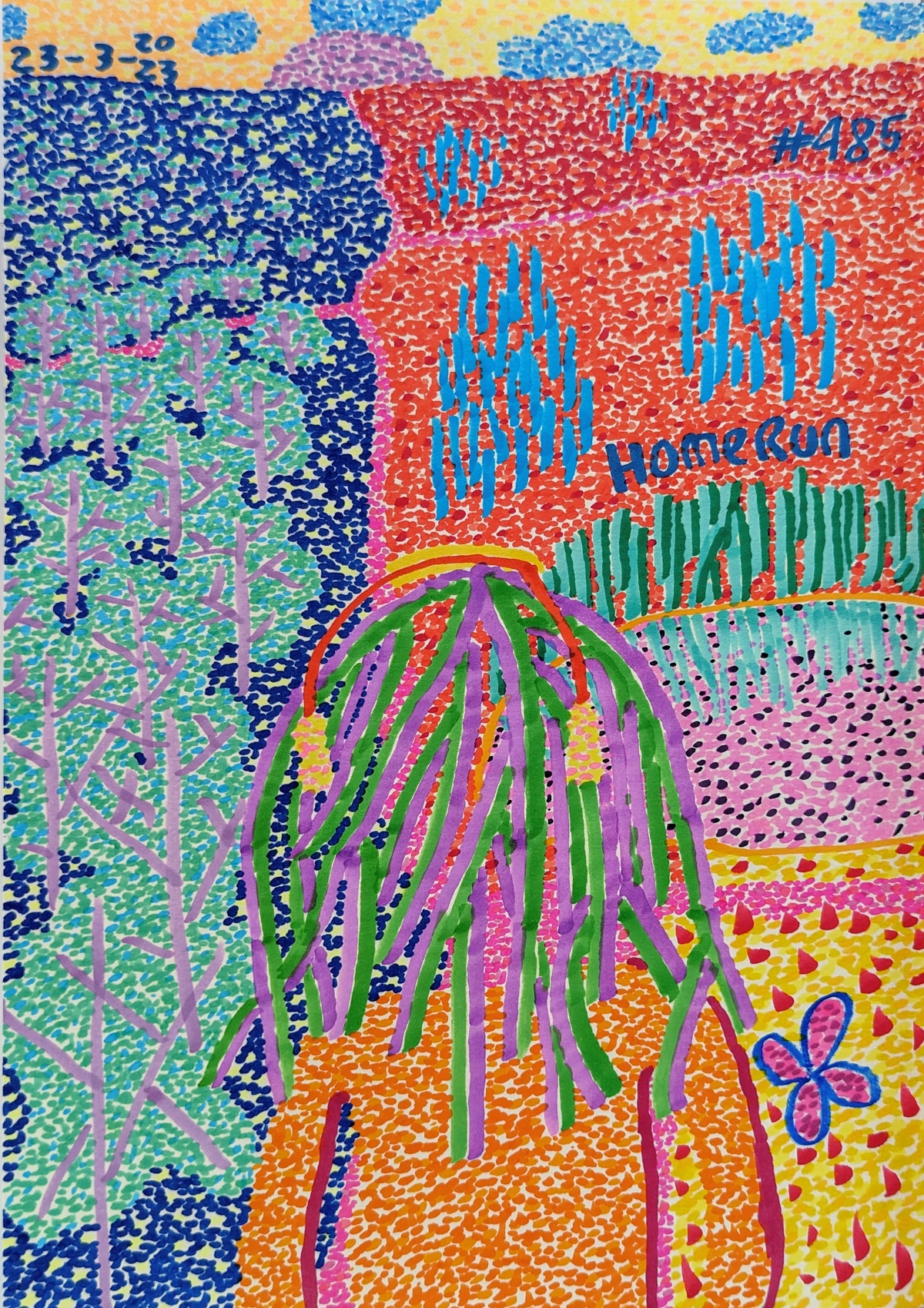
credit, licence
It Doesn't Feel 'Soulful' Yet
This is the hardest one, as 'soulful' is so subjective and personal. It often means taking bigger risks with your heart, not just your eye. It's about authentic self-expression. Perhaps it's time to visit my /timeline for some inspiration!
- Inject More You: Are there enough pieces that truly resonate with your memories, passions, or identity? A piece doesn't have to be 'fine art' to be soulful. A child's drawing, a pressed flower, a ticket stub from a meaningful event – these are deeply personal. Consider why I paint abstract: my personal philosophy and artistic vision for inspiration on personal connection.
- Tell a Story: Imagine explaining your wall to a friend. Can you articulate the story of each piece, or the story the collection tells together? If not, consider what pieces might help complete that narrative. This is where visual storytelling techniques in narrative art can be indirectly applied. Your wall is your autobiography in pictures.
- Be Patient: A truly soulful collection often evolves over years, reflecting different chapters of your life. Don't force it. Let it grow organically as you discover new art and new parts of yourself. My own artistic style has certainly evolved this way.
One Piece Dominates Everything (or Gets Lost)
Balancing your 'stars' and 'supporting cast' is key. Every piece deserves its moment, but some are meant to lead the eye.
- Solution for Dominating Piece: If a piece is too overpowering, try giving it more negative space, or surrounding it with smaller, quieter pieces that don't compete. Alternatively, if it's very bold, place equally bold (but different) pieces nearby to create a dynamic tension rather than outright competition. Sometimes, moving it to a different wall, giving it a solo moment, is the best solution.
- Solution for Lost Piece: If a piece isn't getting noticed, try giving it a more prominent frame, or place it next to a larger, more eye-catching piece that can act as a visual 'arrow' pointing to it. Sometimes, simply moving it to a different part of the wall, or giving it its own small cluster, can make all the difference. Consider adding a subtle picture light to highlight it.
How Do I Know When It's 'Enough'?
This is perhaps the trickiest question, and it's deeply personal. A soulful gallery wall should feel rich, dynamic, and complete, but never cluttered or overwhelming. When you find yourself asking if it's enough, take a moment to step back. What's your gut telling you? Does it feel balanced, or does your eye keep searching for more, or trying to escape? There's no magic number; it's about the feeling it evokes. If it brings you joy, makes you pause, and tells a story that resonates, then it's perfect. Trust your intuition – your soul knows when it's found its voice on the wall. After all, this isn't just about hanging art; it's about celebrating you.
FAQ: Your Soulful Gallery Wall Questions Answered
Here are some frequently asked questions I often encounter when people are creating their own gallery walls.
Can I mix expensive art with affordable prints or personal items?
Absolutely, and I encourage it! The essence of a soulful gallery wall is personal resonance, not monetary value. Juxtaposing a beloved flea market find with a gallery piece, or a child's drawing with a limited edition print, adds depth, personality, and genuine storytelling. The key is thoughtful framing and placement to give each piece its due, making the entire collection feel cohesive and authentic to your story.
How do I ensure my gallery wall doesn't look too busy or cluttered?
The secret lies in intentional negative space and strategic grouping. Don't feel compelled to fill every inch. Allow breathing room around and between pieces. Group smaller, related items into mini-clusters to create visual 'pockets' of interest. Also, consider a unifying element like consistent matting or a subtle color palette that ties disparate pieces together, even amidst the chaos. Remember, it's about creating a conversation, not a shouting match.
What's the best way to start if I only have a few pieces?
Start small and let it grow organically. Begin by identifying your largest or most impactful piece – this can be your anchor. Then, gather other pieces that genuinely resonate with you, regardless of size or style. Use the 'mock-up on the floor' method to experiment with arrangements. Your gallery wall is a living autobiography; it doesn't need to be completed overnight. Embrace the journey of collecting and evolving your display as you acquire new treasures.
How do I handle oddly shaped items or objects that aren't flat?
This is where the 'intentional chaos' truly shines! Don't shy away from three-dimensional objects. Shadow boxes are fantastic for delicate or small items, creating depth and protection. Larger objects can be mounted directly to the wall using appropriate hardware, or even leaned on a console table or mantelpiece beneath your hanging art. These elements break the two-dimensional plane, adding incredible texture, shadows, and intrigue, making your wall feel more immersive and dynamic.

